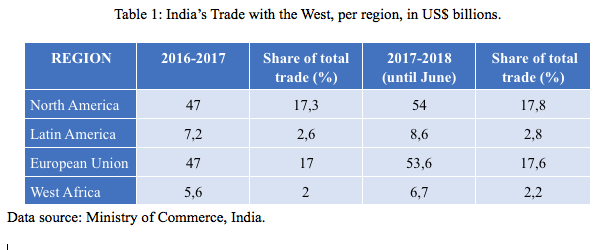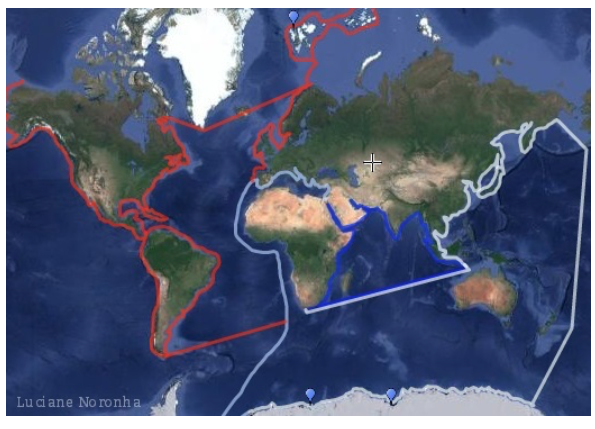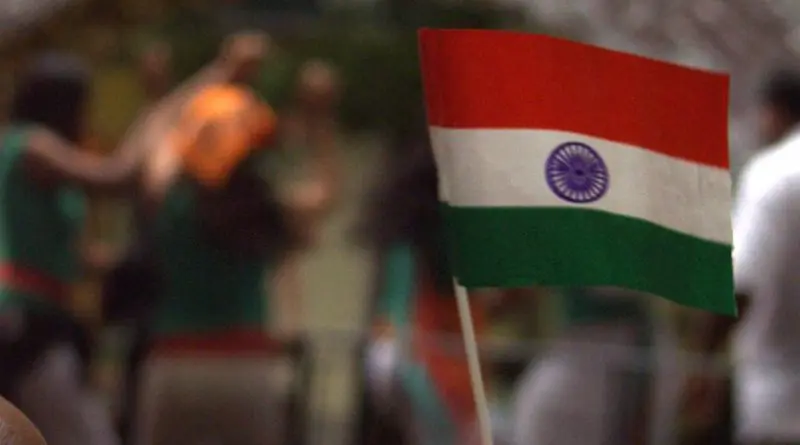Time For An ‘Indo-Atlantic’ Approach For India’s Foreign Policy – Analysis
By Luciane Noronha M. de Oliveira*
The Indian government announced it would stop all imports of Iranian oil by November 4, following the threat of sanctions made by the U.S. As a country with a growing economy that imports nearly 80% of its oil, it means that India will have to increase imports from elsewhere – and West Africa and America are on the list. Considering the soaring trade between the South Asian country and Atlantic Ocean countries, it is time for New Delhi to think about a “Indo-Atlantic” concept to underpin and expand the reach of the maritime dimension of its Link West policy.
When Narendra Modi assumed office as Prime Minister (2014), one of his foreign policy priorities was to strengthen ties with Middle East countries. The importance of the region for India’s energy security is still huge and according to public data, two thirds of Indian citizens living abroad are in the Gulf states. These factors contributed to the creation of a new foreign policy concept called Link West. Subsequently, this concept was used to refer to the Mediterranean region.
However, the North and South Atlantic were until now not included in the Link West approach. There is a lack of strategy from India towards this regions, despite its growing importance for the South Asian country: trade with all regions coastal to the Atlantic Ocean has increased compared to last fiscal year (see Table 1). Besides that, Venezuela and Nigeria are, respectively, the fourth and fifth biggest suppliers of oil to India, and the imports of this product from the U.S, Angola, Mexico and Brazil are also on the rise as part of the strategy of diversifying partners to reduce dependence on Middle East countries. Also, India’s economic growth might trigger the need for new consumption markets and the Western countries in Africa, America and Europe would be significant potential importers of Indian goods.
 Politically, this region is also relevant: according to the Ministry of Overseas Affairs, the U.S is home to 4 million Indian citizens, Canada has 1 million and the United Kingdom has 1,8 million. In Guyana, 39,8% of total population is of East Indian origin, in Trinidad and Tobago the rate is 35,4%; and in Suriname, 27,4%. Considering the large diaspora and the political influence they could represent in India’s favor in the Atlantic countries, it is hard to understand why India hasn’t given attention to this region yet. In the U.S, an increasing number of Indian-Americans are contesting elections and their relevance for American domest politics were an important aspect on the process of normalization of Indo-U.S. relations post-Cold War.
Politically, this region is also relevant: according to the Ministry of Overseas Affairs, the U.S is home to 4 million Indian citizens, Canada has 1 million and the United Kingdom has 1,8 million. In Guyana, 39,8% of total population is of East Indian origin, in Trinidad and Tobago the rate is 35,4%; and in Suriname, 27,4%. Considering the large diaspora and the political influence they could represent in India’s favor in the Atlantic countries, it is hard to understand why India hasn’t given attention to this region yet. In the U.S, an increasing number of Indian-Americans are contesting elections and their relevance for American domest politics were an important aspect on the process of normalization of Indo-U.S. relations post-Cold War.
The Atlantic countries are also rich in natural resources. Six of the ten largest copper reserves are located in Chile. Canada and Brazil are two of the ten countries with the largest uranium reserves in the world. In West Africa, there are reserves of diamonds, timber and gold. Brazil holds the largest iron ore mines. And there is, of course, oil and gas. Apart from that, deepening ties with coastal Atlantic countries can bolster India’s presence in the Arctic, where it has a research station – Himadri, in Svalbard Island –, and also Antarctica, where the South Asian country has three stations – Maitri and Bharati. The first one is grographically located in Queen Maud Land, in a region of transition between the Indian and the Atlantic Oceans.
Considering all of these aspects, it is important for India to enlarge its Link West policy reach and start to figure a geopolitical conceptual approach to the Indo-atlantic region to complement the already existing Indo-Pacific idea. This is an important move towards the institutionalization of a policy aimed at gaining influence over strategically important regions and to help integrate the Indian Ocean affairs with the Atlantic Ocean. India’s 2015 maritime strategy made progress towards this subject by adding the West African coast to its secondary area of interest, but this notion should be further enlarged to encompass the growing ties with America, and Europe and bolster India’s presence in those areas.
Taking into account the growing importance of the Atlantic countries for India’s trade and energy security, the image below (Figure 1) shows a proposed representation of a third area of interest that could be included in the next maritime strategy update.

The Atlantic Ocean has been long marginalized in India’s power balance, which is historically focused on Asian and East African affairs, and it is also a new frontier for India’s foreign policy and maritime power to reach. The Indo-Atlantic as a strategic region for Indian power projection is already a reality that should be acknowledged by Indian political elite and by its high-level strategy documents.
* Luciane Noronha M. de Oliveira is a research assistant at the Centre for Strategic and Political Studies of the Brazilian Navy.

